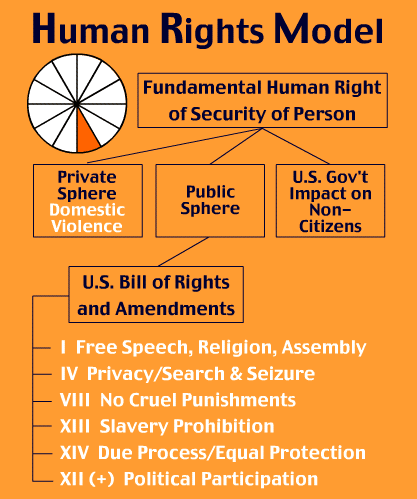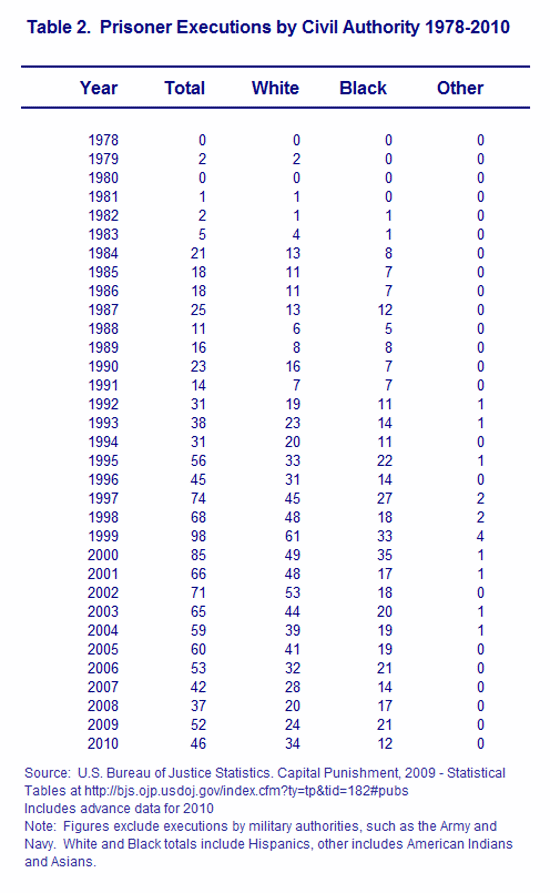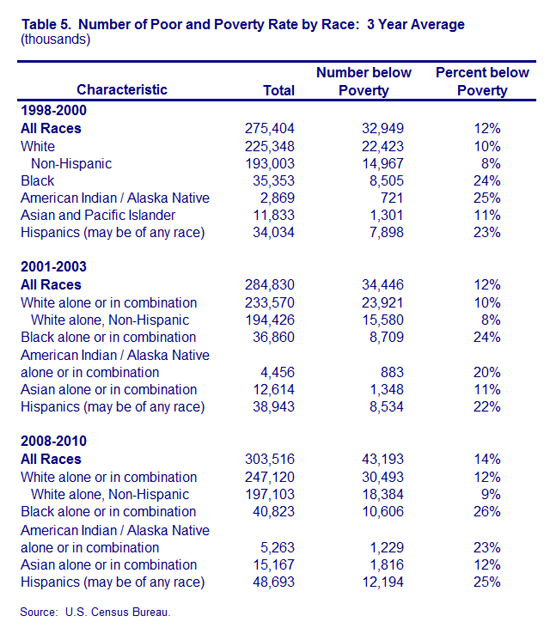
OVERVIEW
MANAGEMENT
PERFORMANCE
POSSIBILITIES
CAPITALS
ACTIVITIES
ACTORS
BURGESS
Metrics |
|
Burgess COMMENTARY |
|
Defining human rights is controversial, particularly because it is deeply rooted in moral philosophy, notions of justice, and respect for human beings.
The Calvert-Henderson Human Rights Indicator provides a tool for viewing and evaluating our rights in the United States. The indicator examines the state of human rights in broad areas: fundamental rights to security of person in the private sphere (e.g., freedom from domestic violence, access to food, nutrition, medical care, and clothing) and the U.S. Bill of Rights and other amendments to the Constitution established to protect our rights in the public sphere (e.g., freedom of expression, religious freedom, rights of assembly, voting rights). The indicator covers incarceration data, the death penalty, prison labor, racial/gender discrimination, rights of American Indians and other indigenous people, mistreatment of prisoners and aliens, as well as voting rights, participation in politics, and the growing influence of money and special interests. The Human Rights model also embraces an evolving international view embodied in the International Bill of Rights (1996) and the Universal Declaration of Human Rights (1948), which cover civil, political, economic, social, and cultural rights. These and other issues have become a keystone of U.S. foreign policy as we begin to see movement toward a reformulation of human rights in ways that integrate not only the private and public rights of women, men, and children but also political, social, and economic rights and responsibilities. Human Rights Expert: Alya Kayal, Esq. Table 1. Prisoners Under Sentence of Death by Race
Table 2. Prisoner Executions by Civil Authority
Table 3. Percentage of Population Who Voted During Presidential Election Years
Table 4. Resident Population by Race (American Indian, Eskimo, and Aleut)
Table 5. Number of Poor and Poverty Rate by Race
Human Rights Indicator by Alya Kayal, Esq. (Updated June 8, 2001) The Calvert-Henderson Human Rights Indicator examines the state of our human rights. The constitutional right to vote is the primary mechanism for political participation in a full and open democracy. One of the significant recent events in human rights occurred with Election 2000. In addition to the chaos, which put the international spotlight on the U.S. voting system, the elections exposed serious human rights problems, including voter disenfranchisement. After holding two fact-finding hearings with over 100 witnesses, the U.S. Commission on Civil Rights, an independent bi-partisan agency established by Congress, stated, 'It is not a question of a recount or even an accurate count, but more pointedly the issue is those whose exclusion from the right to vote amounted to a No Count.'1 The Commission found problems, such as the removal of non-felons from voter registration rolls based on unreliable information; assignment of African-Americans to polling sites that did not have adequate resources to confirm voter eligibility; production of 'overvotes' or 'undervotes' as a result of defective and complicated ballots given to many Jewish and elderly voters; closing polling places early or moving them without notice; old and defective equipment found in poor precincts; no language assistance for many Haitian Americans and Puerto Rican voters; accessibility difficulties at certain polling stations for persons with disabilities; and lack of adequate training for poll workers. Florida is also among nine states that deny the right to vote to all ex-offenders who have served their time. Approximately 20 percent of these ex-felons are African-Americans, and advocates claim that the high rate on incarcerated African-Americans who have lost their voting rights amounts to disenfranchisement. A report by The Sentencing Project and Human Rights Watch found an egregious impact of U.S. disenfranchisement laws with 13 percent of African-American men (1.4 million) being disenfranchised, representing just over one-third (36 percent) of the total U.S. disenfranchised population.2 Moreover, Human Rights Watch reported that 31.2 percent of African-American men in Florida were excluded from the polls during the 2000 elections.3 Human rights in the United States is very much linked to the survival and security of American Indians and other indigenous peoples. In 1999, the Census Bureau estimated that there were 2,397,000 American Indians in the United States, approximately 0.9 percent of the resident population. American Indians face ongoing oppression and violations of basic human rights, including struggles to preserve homelands, sovereignty and natural resources rights; respect for cultural, ceremonial, and sacred sites; and protection of intellectual property rights. Offensive and stereotypical images, names and symbols of American Indian peoples are still being used, particularly in the advertising and marketing of products. Poverty, a basic denial of human rights, is a major problem in the American Indian community. For 1997-1999, the poverty rate among American Indians and Alaska Natives was 25.9 percent; the average income being $30,800 a year. This poverty rate was the highest for any U.S. population group. There is heightened debate on the death penalty with Timothy McVeigh's execution, increased use of DNA testing, and the exoneration of many people on death row in recent years. The Department of Justice confirmed racial disparities in the application of the death penalty in a new report. From 1995-2000, U.S. Attorneys recommended seeking the death penalty for 183 defendants (out of a total of 682 submitted for review). Of the 183 defendants, 135 persons (or 73 percent) were minorities. As of July 20, 2000, 19 defendants were under a federal sentence of death, out of which 78 percent are minorities.4 Between 1988-1994, federal prosecutors sought the death penalty against 47 defendants, 40 percent of whom were minorities. Illinois governor, George Ryan, a Republican imposed a statewide moratorium on executions at the end of January 2000, after the exoneration of 13 death row inmates. Despite this positive development, 85 people were executed in 2000 and 33 in 2001 (as of May 29, 2001) in the United States. On a global perspective, the U.S. was voted out of the United Nations Commission on Human Rights in 2001 for the first time since 1947. This unfortunate development sheds doubt about our country's progress toward embracing international human rights. ENDNOTES
|
|
|
| The text being discussed is available at http://www.calvert-henderson.com/humanr.htm |





